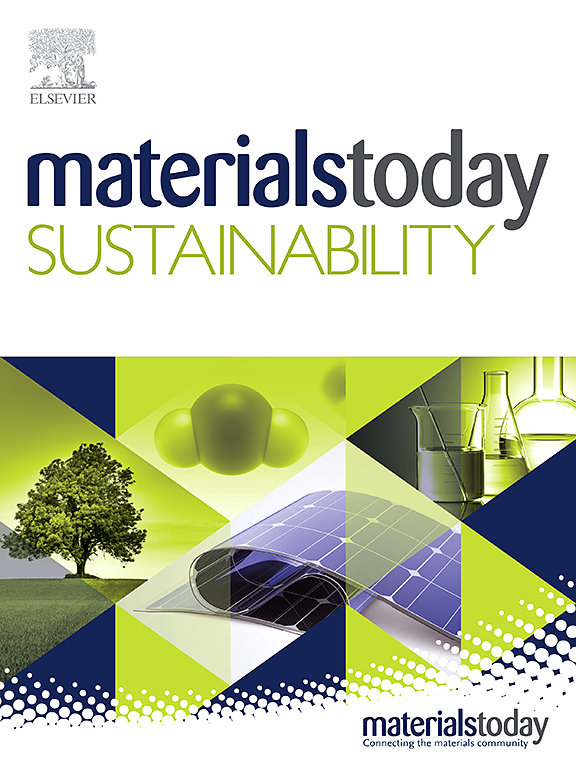Revolutionary optimization: Synthetic fiber-reinforced geopolymer mortars with metazeolite and red mud for unmatched durability and sustainability
IF 7.1
3区 材料科学
Q1 GREEN & SUSTAINABLE SCIENCE & TECHNOLOGY
引用次数: 0
Abstract
This study provides a comprehensive life cycle assessment (LCA) of geopolymer mortar (GM), demonstrating notable environmental, economic, and durability advantages over traditional cement mortar (TCM). The objective is to assess GM's performance and sustainability in comparison to TCM. The production of GM, which utilizes materials like metazeolite (MZ) calcined at 900 °C, red mud (RM), and ground granulated blast slag (GGBS) activated by NaOH and Na₂SiO₃ in a 2:1 ratio, is found to be more efficient. Durability tests revealed that GM's compressive strength improved by 60%–133%, with GMs containing 30% RM and 0.5% basalt fiber (BF) maintaining 36.71 MPa and those reinforced with 0.5% polyethylene fiber (PEF) retaining 35.94 MPa after 270 days of exposure to hydrochloric acid (HCl). When exposed to sulfuric acid (H₂SO₄), the samples with polyethylene fibers showed the least deterioration, retaining 37.27 MPa after 28 days. LCA results indicate that although the raw material costs for GM are roughly double those of TCM, the lifecycle expenses of GM are competitive due to 50% lower production costs, 100% higher transportation costs, and 33% lower maintenance costs. Furthermore, GM generates about one-third of the CO₂ emissions of TCM, representing a 67% reduction. GM also reduces toxicity potential by 70%, emitting fewer phosphates and nitrates. Additionally, GM disposal results in decreased CO₂ and methane emissions and less heavy metal leaching compared to TCM. The optimized GM mix achieved a TOPSIS score of 0.85, significantly higher than TCM's 0.45, highlighting GM's superior sustainability and overall performance.
求助全文
约1分钟内获得全文
求助全文
来源期刊

Materials Today Sustainability
Multiple-
CiteScore
5.80
自引率
6.40%
发文量
174
审稿时长
32 days
期刊介绍:
Materials Today Sustainability is a multi-disciplinary journal covering all aspects of sustainability through materials science.
With a rapidly increasing population with growing demands, materials science has emerged as a critical discipline toward protecting of the environment and ensuring the long term survival of future generations.
 求助内容:
求助内容: 应助结果提醒方式:
应助结果提醒方式:


